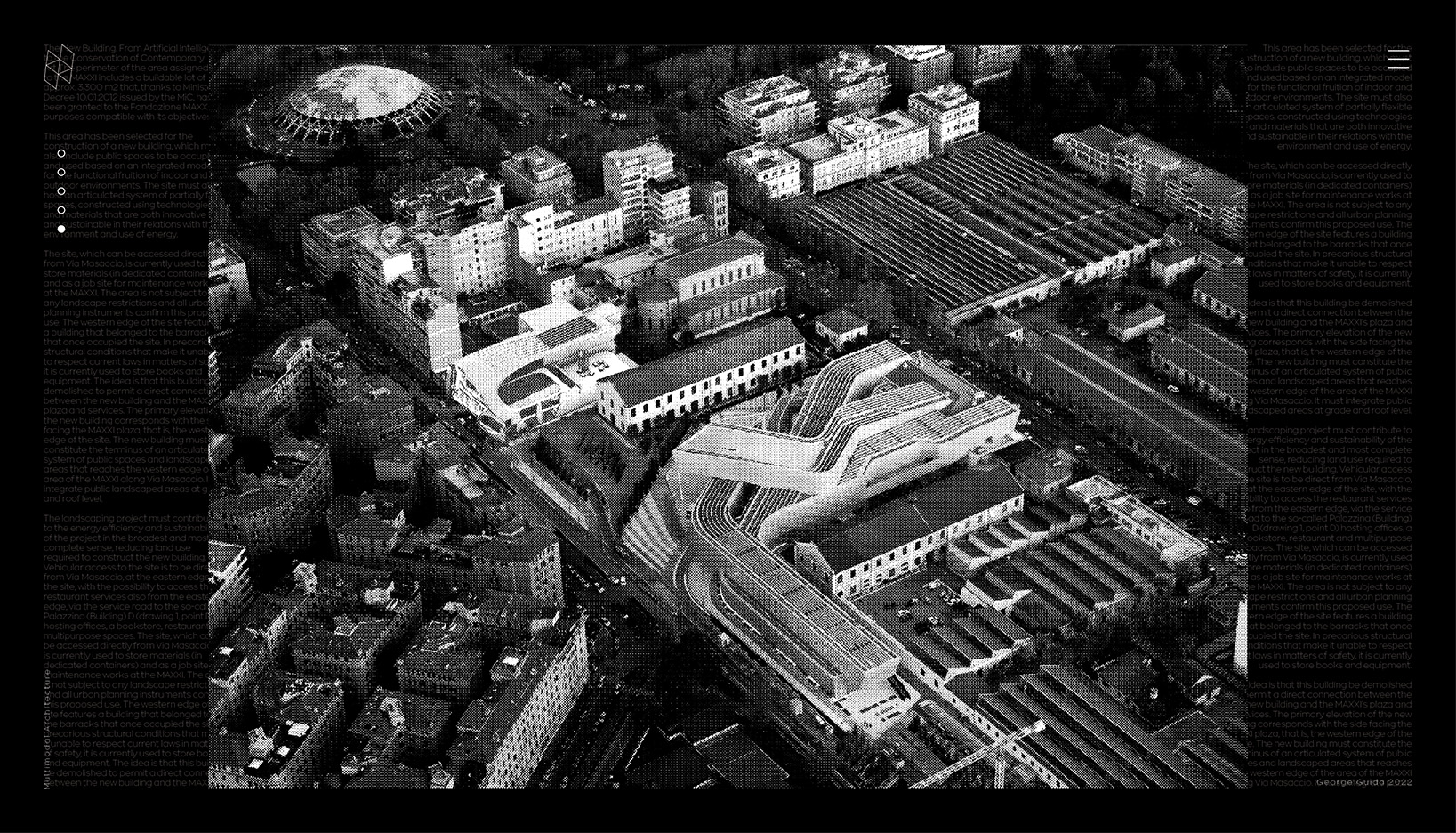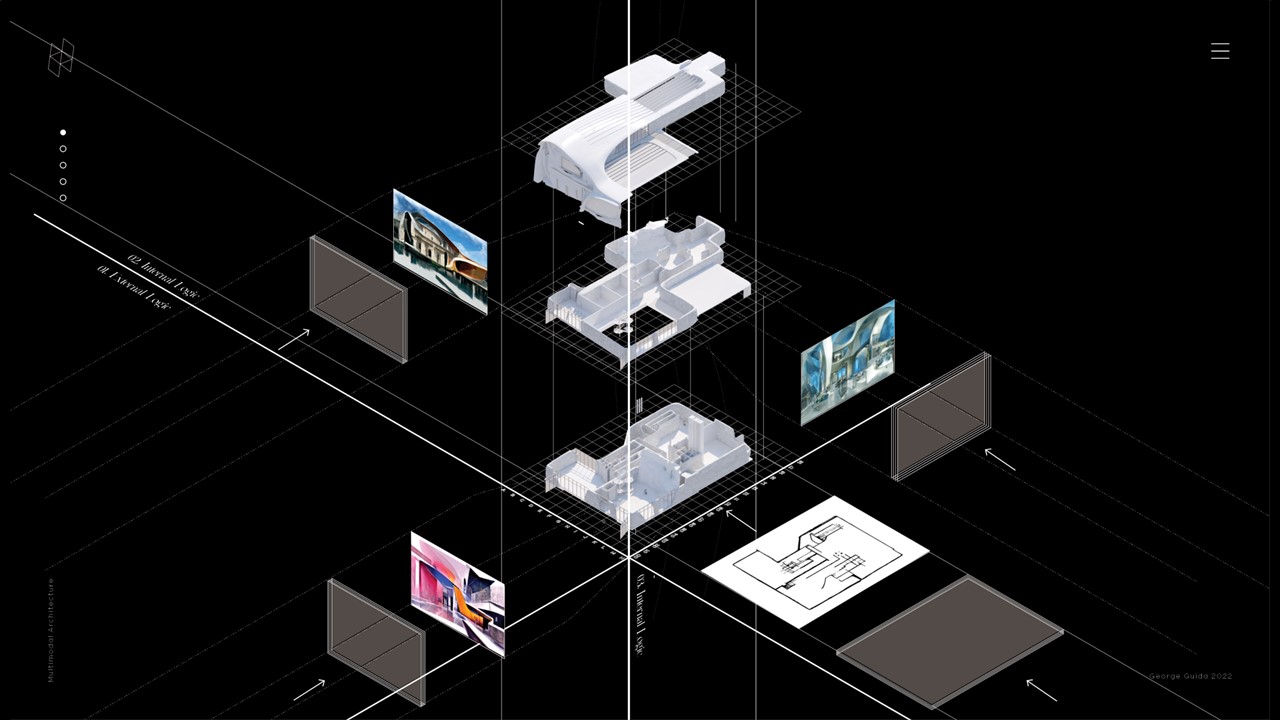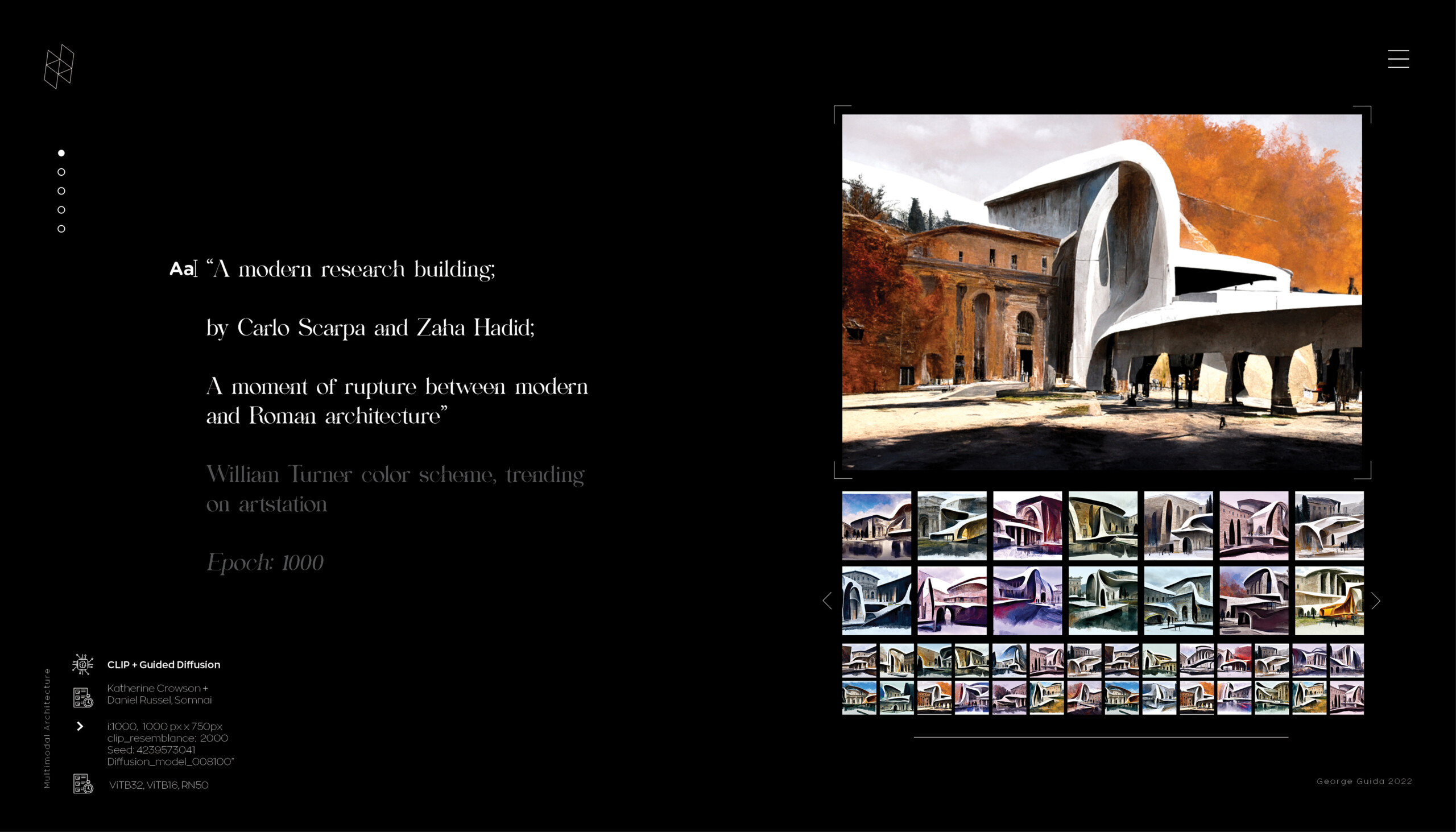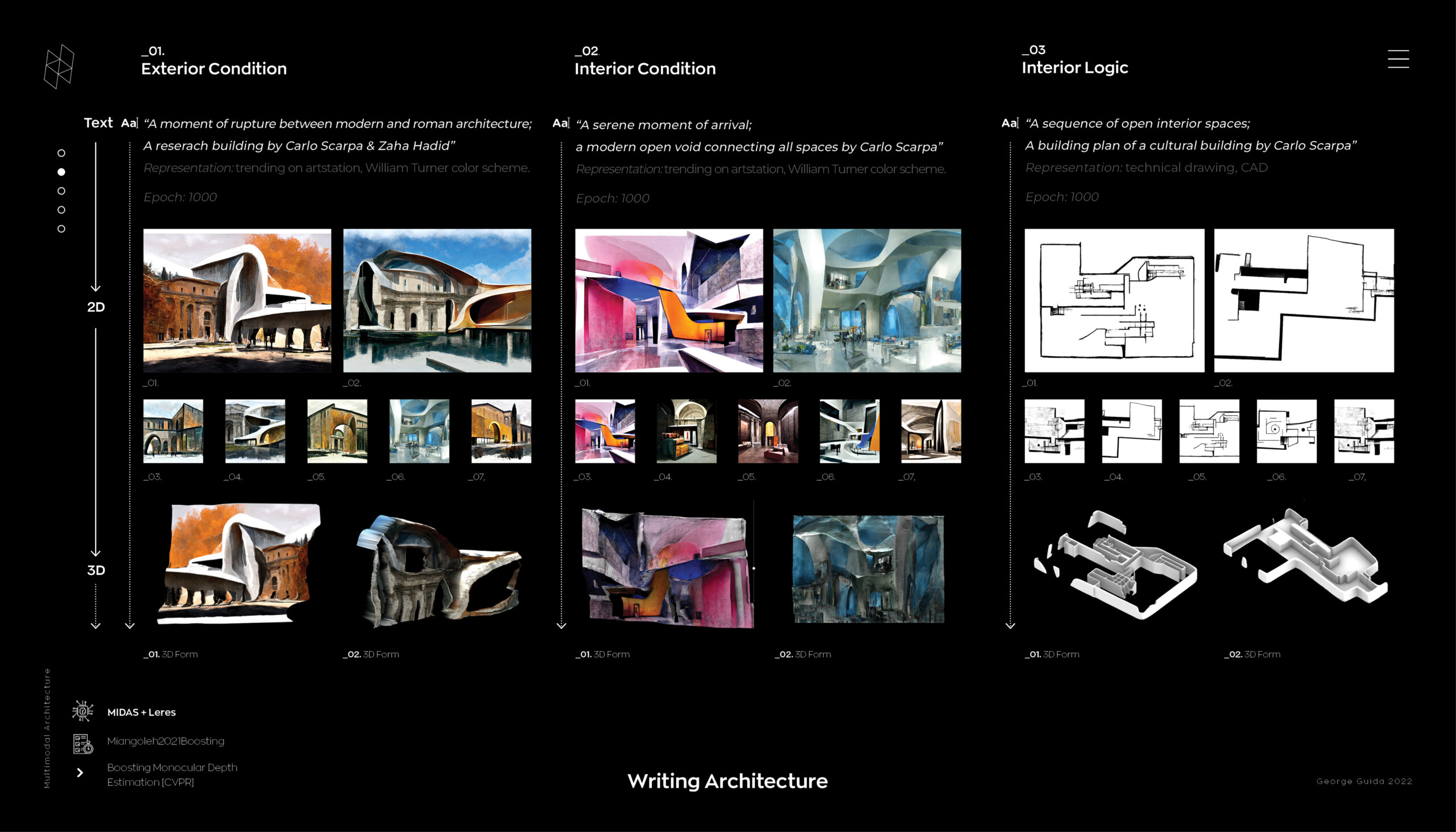2022 Digital Design Prize: George Guida’s “Multimodal Architecture: Applications of Language in a Machine Learning Aided Design Process”

by George Guida (MArch II ’22) — Recipient of the Digital Design Prize.
This thesis project explores how artificial intelligence can be used as a creative medium to reframe the practice of design itself. The project probes the imbricated ways in which machines read and transform words and images and how human designers might leverage such techniques to multiply imaginative possibilities.
Throughout architectural history, different tools of design have affected the culture of architectural production. While drawings and visual imagery often act as a primary form of contemporary representation, architecture cannot be reduced to a single mode. The cyclical tension between the conceptual and material relies on a multimodal process originating from semantics. Whether built form or text, both can be seen as a form of material architecture that relies on a necessary descriptive and conceptual dimension. This thesis revisits the relationship between language and architecture and how this often-secondary medium of design will play an integral role within design practices in the coming years through the use of machine-learning algorithms.
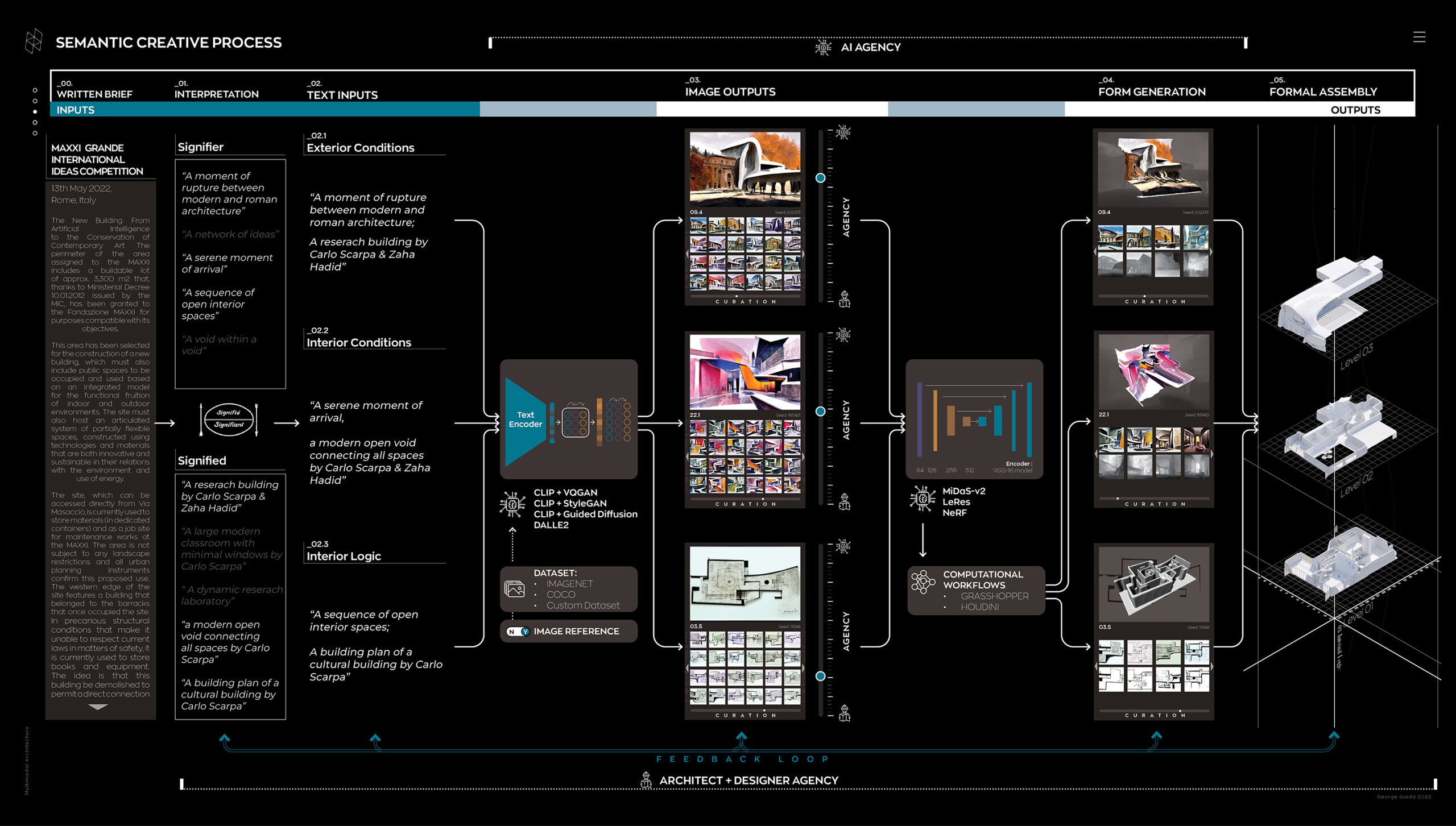
Emergent multimodal neural networks are now capable of learning visual concepts from natural language supervision. Common language can therefore be used to generate unseen digital images, forms, and content, representing a historical moment of convergence between image and text processing. This brings forward a fundamental shift in how language and its articulation can be used within the creative process. For most of the 20th century, architects have been in denial that language has had any significance. There was this enormous emphasis on building and drawing being the only medium of the architect, with architects such as Mies famously saying: “Build, don’t talk.” (Forty, 2004) Tschumi, however, describes how there is an abstraction, and conceptual dimension to architecture that is inevitably part of architecture and that, not surprisingly, can be mastered more precisely through the conceptual meanings of words. (Tschumi, 1993) By distinguishing between different forms of writing – the writing about architecture as the semiotic signifier and the writing of architecture as the signified, a new design methodology can be established. While writing about architecture is most common, where text is typically descriptive, these in themselves are not architecture alone. What is interesting is to consider the writing of architecture as architecture in itself. “In other words, they propose forms of architectural strategies or concepts literally in the form of a substitute.” (Tschumi, 1993) Within architecture, this is a process that typically originates from the design brief, upon which a concept of linguistic idea can emerge. This creative process, therefore, begins only, as Koolhaas describes, when “a concept, ambition or theme that is put into words, and only at that moment that it is put in words can we begin to proceed, to think about architecture: the words unleash the design.” (Koolhaas, 1993)
With the recent developments of machine learning, in particular text-to-image and generative 3D models, this thesis critically repositions language as a central mode of representation and apprehension of architecture. Through the creation of a cyclical design methodology originating from the brief, architects and ‘the machine’ are in constant dialogue within a new collaborative and multimodal process. Ultimately, these new human-machine interactions augment rather than limit the agency and creativity of the architect.
References
Forty, A. (2004). Words and Buildings: A Vocabulary of Modern Architecture. Thames & Hudson.
Tschumi, B. (1993). Modes of inscription. ANY: Architecture New York, pp.50–53.
Koolhaas, R. (1993). Why I Wrote Delirious New York and Other Textual Strategies. ANY: Architecture New York, pp. 42-43.
